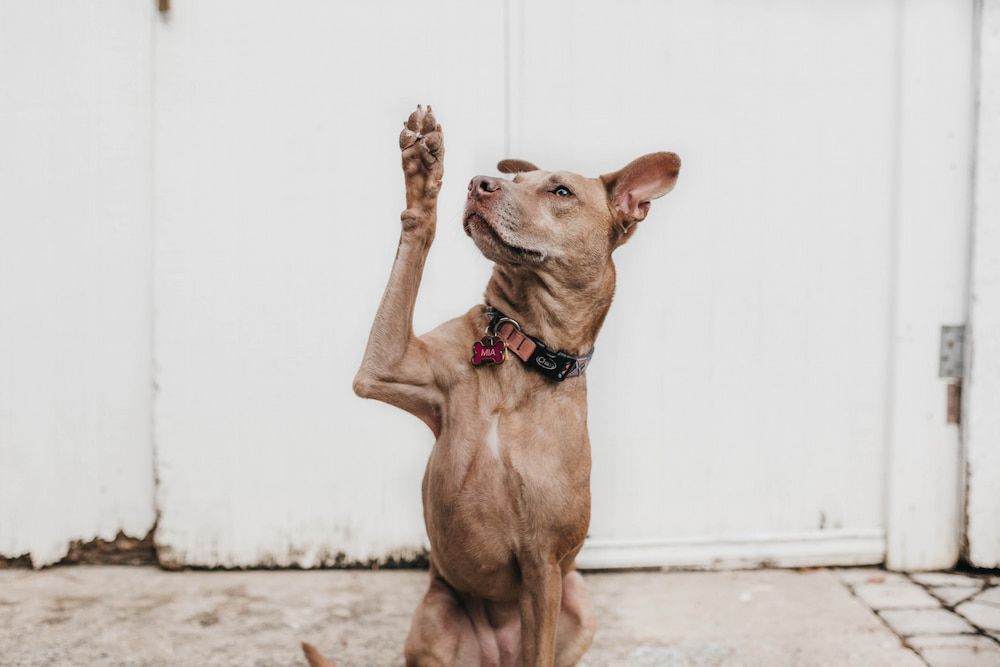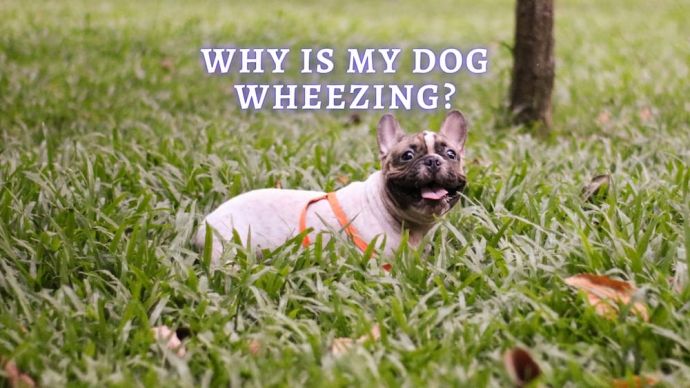Dog Sprained Leg: Signs Your Dog Sprained a Leg and What To Do About It
Written by:
Author: Carol Young
Carol has worked in specialty, emergency, mixed animal and general veterinary practices, and enjoys all aspects of veterinary medicine. Her special areas of interest include anesthesia, critical care, emergency, dentistry, internal medicine and small animal nutrition.
View all 62 articlesLearn about our editorial process and veterinary review board.
Viewed: 584
Updated on: 07/05/2023
Does your dog have a sprained leg? Is your dog limping or yelping out in pain during certain movements? If you’re wondering about the signs and symptoms of a sprain and would like to know how to prevent sprains and treat them, then you’ve come to the right place.
Just like humans, leg sprains in dogs can be fairly common, especially in younger dogs who are very active and love to run, jump and chase balls. As a dog owner, you can learn to recognize signs of a sprain in your canine pal, and with the help of your veterinarian, you can also learn how to treat the condition and how to prevent future injuries.
If you notice that your dog is limping, and suspect a sprained leg, call your veterinarian as soon as possible. Although sprains are common, they can also be quite painful and make your pet uncomfortable and perhaps a little crabby. By seeking veterinary help, you can ensure that your dog will make a speedy recovery.
What are Sprains and Strains in Dogs?
There is a difference between a sprain and a strain in a pet.
A sprain is an injury to a ligament that connects two bones, and these ligaments can be stretched or twisted during activity, causing pain, swelling, and lameness. Most of the time the ligaments in the elbow and the knee (called the stifle) suffer strains, but strains to the shoulder and hips can also occur.
A strain is also a type of joint injury, but it occurs when a muscle and/or tendon connecting two bones gets pulled or overstretched. Strains may not be as serious as sprains but can cause pain and lameness in your dog.
Sprains are quite common in dogs, especially in very active dogs who like to run and jump. However, sprains also occur in overweight and elderly dogs too. The drawback to sprains is that they can cause some damage to joints, such as the stifle joint. A common sprain, especially in larger breeds, results in a torn cranial cruciate ligament (CCL), which connects the bones of the knee. This can lead to chronic lameness, swelling, and pain.
Strains can often be treated with anti-inflammatory medication and rest, whereas serious sprains (such as a CCL) may sometimes require surgery.
RELATED: Is My Dog In Pain?
What Causes Sprains and Strains in Dogs?
Leg sprains and strains are typically can be caused by several things, including:
- Intense physical activity
- Slipping
- Falling
- Tripping
- Jumping
- Making sharp turns
- Landing hard
- Injury
- Obesity
The causes of strains and sprains listed above can result in the stretching, twisting, and/or tearing of the connective tissue that attaches to bone joints and/or muscles.
Some of the more common areas where dogs get sprains and strains are the carpus (wrist), the stifle (knee), the hock (ankle joint), the paw, or the hip.
- Carpus strains/sprains. When a dog strains or sprains a carpus joint (wrist), it usually occurs as a result of landing hard on one or both of the front paws on a hard surface. Symptoms include limping on one of both front paws, a pain response when manipulated, or a swollen wrist joint.
- Stifle strains/sprains. Dogs who have injured a stifle (knee), often present with a limp on the affected back leg and may limp, walk differently, or shift weight to the healthier leg. The dog may or may not lift the entire back leg, have swelling at the joint, or may walk gingerly on that leg.
- Hock strains/sprains. The hock joint is known as the tarsus or the ankle joint. Strains/sprains in this area result in limping, swelling, lameness, and pain.
- Paw strains/sprains. Paw injuries are more common in older dogs due to the degeneration of ligaments and joint tissue. In younger dogs, pas strains/sprains can be due to developmental abnormalities or growth issues. Signs and symptoms of a strained paw include over-flexion (bending) of the paw, swelling, pain, joint instability, and pressure sores.
- Hip strains/sprains. The hip joint in a dog is a ball and socket joint, but when the ligaments connecting the femur (leg bone) to the hip are stretched or torn, this can cause damage to the joint capsule, swelling, pain, stiffness, hindlimb weakness, and lameness. Dogs who are prone to hip dysplasia (where the head of the femur doesn’t quite fit into the hip socket), are also prone to strains in the area.
Treating a Dog’s Sprained Leg At Home
First of all, if you are worried that your dog may have strained or sprained something, call your veterinarian right away, and don’t try to treat yourself. However, emergencies always seem to happen at inconvenient times, and you may find yourself waiting until your vet opens the next business day.
If you are waiting to see your vet, there are a few things you can do to treat a sprain at home.
- Rest your dog. Limiting activity and re-injury is vital, and that may mean confining your dog to a crate or a smaller room until you can get to the vet.
- Cold compresses. If your dog has just strained/sprained a joint, try cold therapy for 10-15 minutes at a time. You can try a frozen bag of peas wrapped in a kitchen towel, just make sure it’s not too cold for your pup. This can help reduce inflammation and pain.
- Omega fatty acids/fish oil. You can give your pup an omega fatty acid supplement, such as fish oil. Omega fatty acids are natural anti-inflammatories. Consult your veterinarian for the proper dose for your dog.
Never give your dog human pain relievers, especially Tylenol or Ibuprofen. Both medications are extremely toxic to dogs and can cause irreparable kidney and liver damage.
If your pup isn’t getting any better, contact your veterinarian. Your vet can give you medicines like anti-inflammatories to help your dog heal and get back on track.
READ MORE: Can You Give a Dog Tums?
Does My Dog Need Surgery?
Most minor strains and sprains can probably be resolved with rest, physical therapy, and anti-inflammatories, however, more serious conditions may need surgery. For example, a torn CCL (the equivalent of a torn ACL in humans), is a common strain/sprain to the stifle joint where the ligaments and/or the meniscus (the connective tissue between the upper lower leg bone) are torn or ruptured.
A torn CCL is a torn cranial cruciate ligament. In dogs, there are two cruciate ligaments inside the knee: The cranial cruciate ligament and the caudal cruciate ligament. These two ligaments are called the cruciate because they cross over each other inside the middle of the knee.
CCL surgery most often involves a TPLO (total plateau leveling osteotomy), in which ruptures or tears to the stifle joint are stabilized using plates and screws. Other surgical procedures such as a Tibial Tuberosity Advancement (TTA), or Extracapsular Repair and TightRope Procedure, can be used to surgically repair the stifle.
If your veterinarian has determined that your dog needs surgery for strain/sprain, you may be referred to an orthopedic surgeon. In such cases, surgery is recommended to prevent permanent joint damage and to relieve pain.
Recovery and Management of Sprains and Strains in Dogs
Many minor sprains or strains can be managed with rest, and nonsteroidal anti-inflammatory medications (NSAIDs) such as Carprofen, Metacam, or Galliprant.
If your vet prescribes an anti-inflammatory medication, follow the label instructions closely, and if your pooch shows any symptoms such as vomiting, diarrhea, or loss of appetite, stop the medication and contact your vet immediately. Never, ever give over-the-counter human NSAID medications as most can be toxic to your dog.
If your vet recommends rest, it’s vital to keep your pup as quiet as possible and refrain from running and jumping. The vet may recommend leash walking only when going outside to eliminate, and avoid jumping up on furniture, going up or down stairs, and using a kennel or crate when you’re not home to supervise.
Your vet may also recommend cold therapy using a bag of frozen peas and holding it over the affected area of your dog’s leg for 5-10 minutes to provide pain relief and reduce swelling.
In some cases, physical therapy may be recommended following a period of rest. If your dog needs surgery, your veterinarian will recommend a period of rest or reduced activity, anti-inflammatories, and physical therapy.
How to Prevent Spains and Strains?
“Prevention is the best medicine,” and in this case, there are several things you can do to prevent strains and sprains.
- Maintain a healthy weight. Dogs who are overweight tend to suffer more from strains and sprains, including ruptures to the CCL. By keeping your pooch at a healthy weight, you can reduce the chances of a strain/sprain and other lameness issues.
- Limit jumping and twisting motions. Dogs who suffer from strains/sprains often come up lame while jumping up into the air t catch a ball and landing hard, or by running, and making a tight, abrupt turn. If your dog is prone to strains/sprains, perhaps it’s best to limit agility-like activities such as fly-ball or fetch and focus on exercise that doesn’t involve a lot of jumping, sprinting, or taking tight turns.
- Omega fatty acid supplements. Omega fatty acids such as fish oil are a great resource for preventing sprains/strains as they are natural anti-inflammatories. There are veterinary products as well that are specially formulated for joint support.
RELATED: Best Joint Supplements for Dogs
If you have any questions as to how to prevent strains and sprains, consult your veterinarian.
People also ask
Will a dog’s sprained leg heal on its own?
Many minor sprains and soft tissue injuries can probably heal on their own with rest, medication, and physical therapy; more serious sprains may need more serious vet care or surgery. However, it depends on the area and the severity of the injury. Sprains tend to be more serious than strains, but if your vet has determined that your pup has a simple strain, most dogs will make a full recovery.
How do you tell if my dog sprained his leg?
The first symptom that most owners notice is lameness when it comes to an injured leg sprain. Lameness is an indication of pain, and the joint may also be swollen and tender. It’s important to call your vet if you suspect a sprain, and not take a “wait and see” attitude as sprains can be quite painful. Also, if a sprain goes untreated, leg muscles can become weaker over time and the limping will continue.
How do you treat a dog’s sprained leg?
It’s important not to treat a sprained leg on your own, especially if it’s serious and your dog is in pain. Contact your veterinarian and make an appointment. However, if you are waiting for an appointment, restrict your dog’s activity, encourage rest, and try cold therapy on the affected limb or joint.
How do I know if my dog’s leg injury is serious?
Serious strains/sprains result in acute or chronic lameness, accompanied by pain and sometimes swelling. If your dog has a serious leg injury, contact your veterinarian or an emergency vet immediately. The vet can do xrays and a thorough examination to determine the extent of the injury and recommend a treatment regimen.
 Cat Care Veterinary Telemedicine: How telemedicine can help manage chronic conditions in pets?
Cat Care Veterinary Telemedicine: How telemedicine can help manage chronic conditions in pets? - 568
- 0
 Dog Care Can Dogs Eat Olives? Benefits and Dangers of Feeding Olives to Your Dog
Dog Care Can Dogs Eat Olives? Benefits and Dangers of Feeding Olives to Your Dog - 167
- 0
 Dog Veterinary Tips Why is my Dog throwing up: Causes and Preventing (Veterinary Advice)
Dog Veterinary Tips Why is my Dog throwing up: Causes and Preventing (Veterinary Advice) - 23424
- 5
 Dog Care Why Is My Dog Bleeding From Its Butt? Causes and treatment of rectal bleeding in the dog
Dog Care Why Is My Dog Bleeding From Its Butt? Causes and treatment of rectal bleeding in the dog - 22074
- 0
 Dog Care My Dog Keeps Scratching His Mouth: Reasons Why Your Dog Scratching Face
Dog Care My Dog Keeps Scratching His Mouth: Reasons Why Your Dog Scratching Face - 17560
- 1























